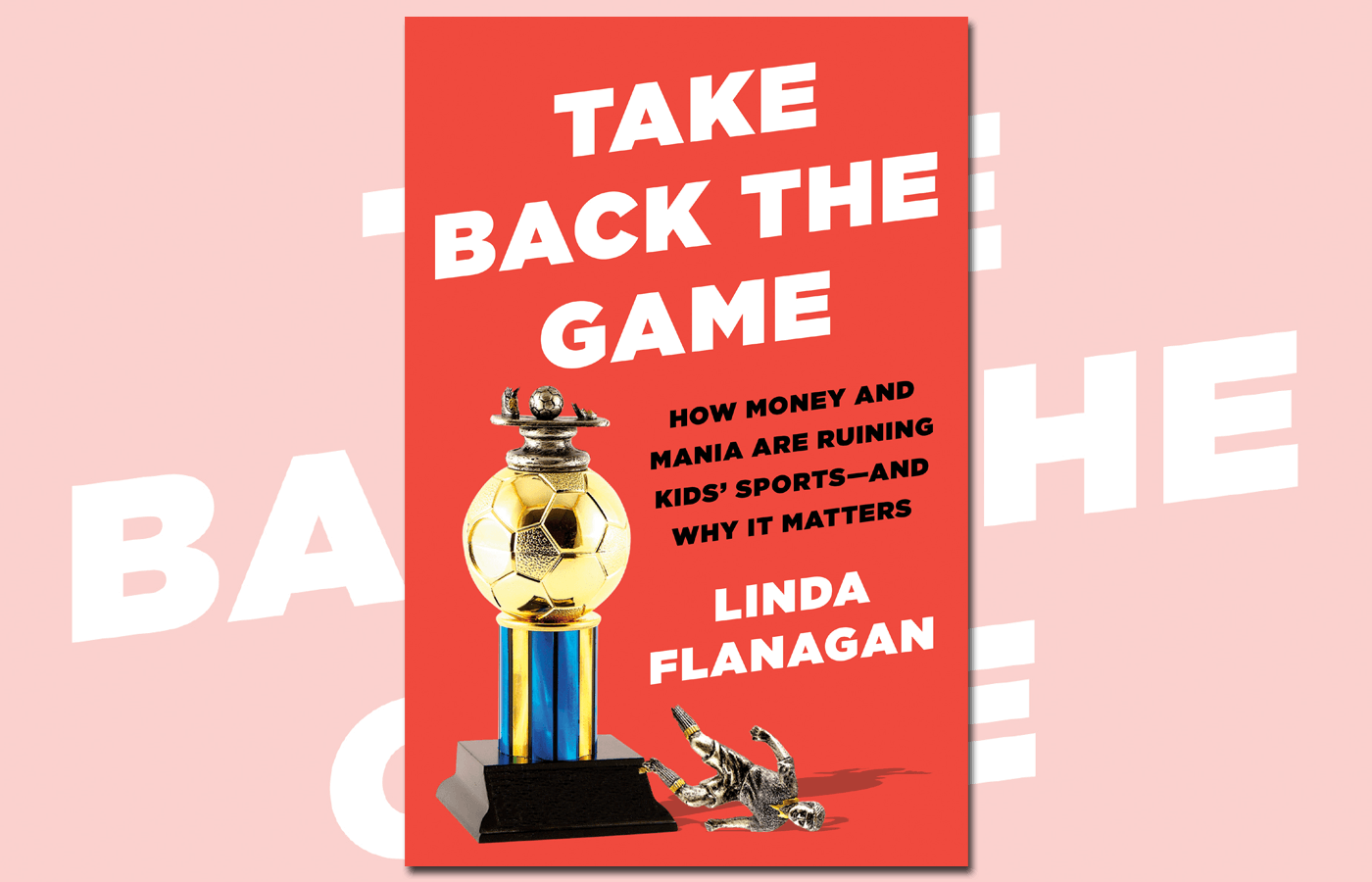
Take Back the Game: How Money and Mania are Ruining Kids’ Sports—And Why It Matters
by Linda Flanagan
Portfolio, 2022, $28; 304 pages.
As reviewed by Jonathan V. Last
My younger daughter is a gifted runner. Midway through this year’s cross country season, her times started increasing. She was getting slower. I asked her what was going on. She explained that she didn’t like the feeling of total exhaustion she experienced at the end of a race, or the pressure and expectations of being out in front. So she’d decided to run at a comfortable pace and enjoy being in the pack, with her friends.
Her decision struck me as crazy. The whole point of racing is to run as fast as you can. To find your limits and push past them. To discover the drive to accomplish more than you think possible.
Also: My daughter is nine years old.
It does not matter—at all—what she does in 4th-grade cross country. And yet I almost suggested she should be running her hardest and not focused on “having fun” with her teammates.
The crazy person, it turned out, was me.
That’s the point of Linda Flanagan’s Take Back the Game, a book about the corruption of youth sports. It should be required reading for every parent. It should be handed out in the hospital along with What to Expect the First Year and Healthy Sleep Habits, Happy Child.
Flanagan, a journalist and former running coach, has pulled off a rare trick: she diagnoses a societal sickness, traces the roots of the malady, and prescribes a cure.

The problem is that we have a Youth Sports Industrial Complex that forces kids into single-sport specialization before they hit middle school. It demands that children be involved in (expensive) club and travel sports programs starting in elementary school. It turns parents into ATMs for the businesses in this sector and Uber drivers for their progeny, because Madison must go to practice three nights a week and then, on Saturday, to the tournament that’s three hours away.
Because it’s good for her. Or something.
This sickness has many causes—including declining public funding for recreational sports and free-market dynamics—but the most significant is “college.”
I put “college” in quotation marks, because the problem is not undergraduate education, but what the idea of “college” has come to mean to us. Since 1980, the real-dollar cost of a public, four-year degree has increased more than 350 percent. At the same time, the admissions process for elite—or even just pretty good—colleges has come to resemble the Hunger Games.
My oldest kid is a high-level baseball player. He’s played with dozens of talented boys over the years, and not a single one has ever said he hoped to make it to the bigs. All of them talked about getting college scholarships.
As such, relying on achievement in youth sports as a ticket to college has become something like playing the lottery. Parents and kids hope that if they put enough time and money into a sport they can one day cash out with a scholarship—or at least entrance to a “better” school.
As is true with all lotteries, this delusion is based on a warped perception of reality. As Flanagan shows, being a recruited athlete is a huge boost in the college-admissions competition. Accomplished athletes get in to elite schools at four times the rate of legacy candidates. And at smaller schools, the athletes can be a nontrivial percentage of the yield. For instance, Georgetown University holds 158 slots for athletes in each class of 1,600 students.
But the mundane reality is that putting Jimmy into an intensive travel baseball program at age 10 costs at least $5,000 a year. If you invested that money annually in a no-load mutual fund, then you’d have about $50,000 for college by the time Jimmy packed off to State U, whether or not he got a sports scholarship. (This is not financial advice.)
Of course, people play lotteries because they’re desperate. And the evolution of college has made many parents plenty desperate.
***
The most valuable section of Take Back the Game is Flanagan’s conclusion, which reads as part policy tract and part self-help book for parents. Her suggestions are powerful because they’re so obvious.
Her first dictum is to delay entry into organized sports as long as possible. Don’t sign them up for pee-wee soccer to get a jump on the club scene—send them out into the yard to kick the ball around. Have a catch with them. Shoot baskets. Let them tumble and do cartwheels in the grass. As Flanagan says, “Just let them play.”
It really is that simple.
Flanagan understands that at some point kids may want to progress to the organized level—and from there, they might get sucked into the maw of travel sports. That’s because, as the 19th century journalist Walter Bagehot observed about financial leverage, once one person has it, everyone else must use it just to keep pace.
So if your kid winds up inside the Youth Sports Industrial Complex, give her off-ramps. All the time. Make it clear that the only reason for her to do the sport is that she wants to. That if she decides to stop swimming and take up the oboe, then all of the time and resources put into swimming over the years won’t have been “wasted”—that those experiences will have helped shape who she is.
In short: when it comes to your kid’s athletic development, present-value considerations should always dwarf future-expected returns.
Another key precept from Flanagan: The family is more important than kids’ sports.
I know people who put off family vacations because their 7th grader had a basketball tournament over winter break.
Think about what that means. Fifty years from now you, the parent, might be dead and gone. Your family could have gone on vacation and made memories that would have lasted their whole lives. And you traded that away for a couple of meaningless basketball games that no one will even remember next month?
No. The moment you get involved in travel sports, make certain that both your kids and the organization understand that family always comes first. And if the club isn’t okay with that, then find one that is.
Perhaps the most valuable lesson from Take Back the Game is that parents have agency. Youth sports have become warped, but parents don’t have to go along with it. They can carve out better paths for their families by being clear-eyed and intentional.
Jonathan V. Last is the editor of The Bulwark.
This article appeared in the Spring 2023 issue of Education Next. Suggested citation format:
Last, J.V. (2023). Resisting the Youth Sports Industrial Complex: Children’s sports are corrupted, but parents don’t have to play along. Education Next, 23(2), 62-63.


